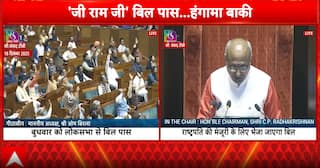Fast Charging Hard Fact: Is It Becoming Just A Number In Phone Rat Race? And What About Battery Life?
Of late, the battery fast charging feature of a smartphone seems like it is getting to be more of a ‘bigger number’ matter than essentially ‘better performance’ issue.

By Akriti Rana and Nimish Dubey
Up until a few years ago, charging a phone used to be quite a tedious task. Batteries of smartphones were getting bigger, and so was the time it took to charge them. It used to take hours of staying chained to a cable to get your phone to that fully charged stage.
Fast forward to today and fast charging has successfully turned hours of charging time into minutes. Thanks to this feature on many smartphones, we no longer have to plug in our smartphones for hours at a time to get them completely charged. Often it just takes minutes of charging and you are good to go for the whole day.
Seems perfect, doesn’t it? Use your phone all day and when it runs dry, just plug it in for a few minutes and you are all set to see off another day of usage.
But while this is the charging-dream, of late the battery fast charging feature seems like it is getting to be more of a ‘bigger number’ matter than essentially ‘better performance’ issue. This might sound strange to those who just love getting their phones from 0 to 100 in under half an hour, so hear us out.
The megapixel complex - when number quantity > performance quality
Like the megapixel count on smartphone cameras, it seems as if fast charging is also heading to a stage where brands are focusing more on numbers rather than on the quality of performance those numbers deliver. The megapixel count of smartphone cameras has comfortably gone into triple digits, but we still see double digit megapixel sensors beat triple digit cameras with ease. This does not mean megapixel count is a frivolous parameter to judge the performance of a smartphone’s camera. It only means you should not judge a camera only by the number of megapixels it brings along. After all, the most popular cameras on a smartphone, the iPhone’s cameras, still only bring three 12 megapixel sensors to the table.
Fast charging seems to be meeting the same fate as megapixels. Initially, when the feature was introduced on a handful of phones, everyone noticed how charging time was getting significantly lesser as compared to normal charging. As the popularity of fast charging grew, the watts grew along. Suddenly, getting your 4,500-5,000 mAh smartphone charged under an hour was not fast enough. Then came chargers that did the job in about 30-40 minutes, the likes of 55W, 67W chargers. And even that difference in charging time made a real impact on the way we used and charged our phones.
But this year brands like Xiaomi, OnePlus, and Realme are taking fast charging well into triple digits like 120W and 150W, with chargers that can charge smartphones with 4,500 mAh batteries in under 20 minutes. Which sounds good. The problem here is that the difference between 120W and 150W is that of a couple of minutes at most, which does not hit you as strongly or makes a difference in the way we charge phones or even for how long we charge our phones. Truth be told, even the ten minute gap between the 30 minute charging time and 20 minute charging time does not feel that significant in actual day to day usage. It is not as if all of us sit with stopwatches, measuring the exact time it takes for a phone to get charged.
Fast charging is great, is safe…but costs money
We really have no issues with fast charging. Contrary to popular belief, the feature does no real damage to one’s long term battery life, thanks to all the safeguards brands now put in place to protect both phones and chargers from getting damaged. But one has to keep in mind that all these measures come with a price tag and that price tag is added to the price of the phone that you end up buying. And unlike the small differences in charging time, the difference between the price tags of faster charging phones and less fast charging ones is often not quite as petite. Brands take different protective measures, use special cables, perform safety tests and get safety certifications while putting in such hefty watt numbers in our fast charging lives.
All of this costs money. And this cost is added to the cost of your smartphone, making it more expensive. Many phones like the Xiaomi 11i, the OnePlus 10R and the Realme GT Neo 3 have special fast charging editions, as well as less fast charging ones. And the special fast charging editions come with higher price tags, even though both editions have almost the same design and hardware. You are essentially paying for saving a few minutes of charging speed.
Just how much difference does that faster charging make
It is not as if these "plain cousins" of super fast charging phones are slowpokes in the charging department either. The Xiaomi 11i comes with a 67W charger which charges its (larger) battery in about half an hour, which is only ten or twelve minutes more than its more expensive HyperCharge sibling. It is almost exactly the same case in the OnePlus 10R and its SuperVOOC Endurance Edition. While the SuperVOOC Endurance Edition comes with a 150W charger that charges the phone from 1-100 in 17 minutes, the 'normal' OnePlus 10R actually comes with a 80W charger that can charge its battery in about 32 minutes. So you are paying Rs 2,000 extra in the case of the Xiaomi 11i HyperCharge and Rs 1,000 extra for OnePlus 10R SuperVOOC Endurance Edition for saving about ten to fifteen minutes of charging time. We know time is money, but still…
It also seems that smartphones with faster charging capacities tend to have smaller batteries. Take the Xiaomi 11i HyperCharge for instance, the phone comes with 120W fast charging support and has a 4,500 mAh battery while the plain version of the same phone comes with a 5,160 mAh battery. The same is the case with the newly launched OnePlus 10R, where the regular version comes with a 5,000 mAh battery, while the SuperVOOC Endurance Edition comes with a 4,500 mAh battery with support for 150W fast charging. So you may be gaining on watts, you are often certainly losing out on mAhs and paying more for the privilege, which defeats the purpose somewhat.
Whatever happened to better battery life?
With high-end specs, powerful displays and processors, you would expect battery life of devices to improve significantly as well. That does not seem to have happened. While 4,000 mAh batteries used to be more than sufficient to see us through more than a day of usage even with a full HD display a few years ago, today the same sized battery can barely see users through a day of normal usage, forget heavy usage. Yes, we know that displays have got bigger and brighter and have higher refresh rates, but surely it is fair to expect some similar improvement on the battery life front? That does not really seem to have happened.
What we have are larger and faster charging batteries, with lots of safeguards to protect that battery and its chargers, but not a massive change in battery life. To cut back on mAhs in such a case for the sake of faster charging seems a little counterproductive, doesn’t it? Your battery charges faster but lasts less longer on a single charge.
Fast charging is awesome, but needs to stop being just about numbers
While fast charging is a very handy feature, it is perhaps not as essential beyond a point as some brands seem to think. They would do well to take a page out of Apple’s and Samsung’s charging handbook. The two most popular smartphone brands around the world do not offer crazy charging speeds — the iPhone 13 Pro charges at 20W and the Samsung Galaxy S22 Ultra charges at 45W. In fact, both brands have even stopped bundling chargers with their phones, even as others pile in 120W and 150W bricks with theirs. Even the best selling Xiaomi Redmi Note series only brought fast charging along a few months ago, all while comfortably selling millions before its fast charging era. Clearly there are limits to the attraction of fast charging.
This in no way means that fast charging should be taken away from our smartphone lives. Far from it. The feature is actually amongst those few that make a real-time difference to our smartphone experiences. But we just do not want this to fall into the same megapixel camera or pixel density in displays number-rat-race where numbers just keep getting added for the sake of it and for adding a few bucks to the price tag, and not for significantly improving performance.






































